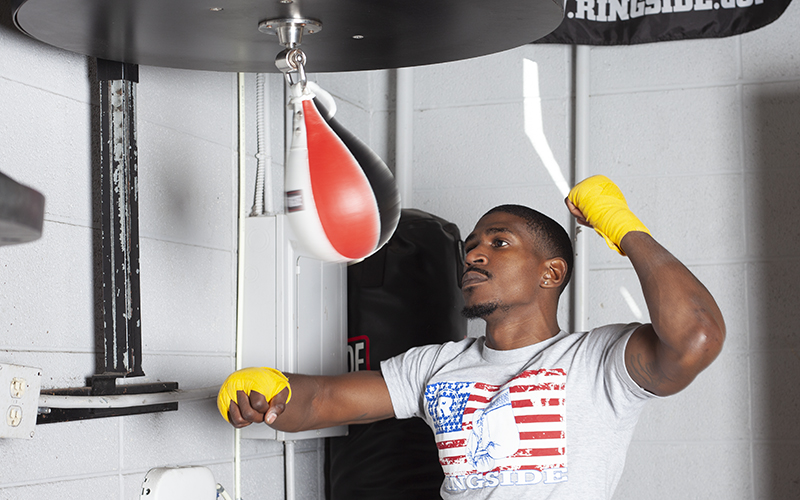Unleashing one’s potential in the boxing ring is not a task that can be achieved overnight. This requires patience, discipline, and a comprehensive boxing training regimen that focuses on strength and speed for maximum impact. Whether you are a beginner who wants to start boxing or an experienced boxer who wants to take your skills to the next level, this post is designed to provide insightful tips and guidance on how to master strength and speed with a boxing training regimen.
Understanding the fundamentals of boxing is crucial. This sport is more than just throwing punches; it’s about strategizing, understanding your opponent, and knowing the right time to strike. The first section of this post is dedicated to shedding light on the importance of boxing fundamentals and how they can be honed for improved performance in the ring.
Next, we delve deeper into the importance of strength and speed in boxing. Often, these two aspects are underestimated in their contribution to a boxer’s success. However, their synergy can create an unstoppable force in the ring. This section will elaborate on the best ways to improve strength and speed with a dedicated boxing training regimen.
Finally, the post concludes with a detailed boxing training regimen designed to help you master strength and speed. This regimen comprises exercises, techniques, and drills that have been proven to enhance a boxer’s power and swiftness. Implementing this regimen in your routine will set you on the path to unleashing your potential and dominating the ring with your newfound strength and speed. Prepare to step into the ring with confidence, armed with the knowledge necessary to take your boxing skills to the next level.
Understanding the Basics of Boxing
Boxing is a physically demanding sport that requires strength, speed, and endurance. In its essence, it is a science of strategy and timing, where the objective is to land punches on the opponent while minimizing the risk of receiving them. The success of a boxer lies not only in his physical abilities but also in his understanding of the sport’s mechanics.

Physical Demands of Boxing
Boxing is a full-body workout that engages every muscle group in your body. In boxing, you use your legs for footwork, your core for balance, and your upper body for delivering punches. The physical demands of boxing are intense and require a high level of fitness. You need to have the strength to throw powerful punches, the speed to dodge attacks, and the endurance to last in the ring.
Mastering Strength in Boxing
Strength is an essential component in boxing. It’s not only about how hard you can hit, but also how well you can absorb a punch. A strong core, for example, can help you maintain balance and deliver powerful punches.
Strength Training for Boxing
To improve your strength in boxing, you should focus on full-body exercises that target your core, legs, and upper body. These exercises can include:
- Deadlifts
- Squats
- Bench Press
- Push-ups
These exercises will help you build the necessary strength to deliver powerful punches and withstand the physical demands of boxing.
Enhancing Speed in Boxing
In boxing, speed is as important as strength. A fast boxer can land more punches, evade attacks, and react quickly to the opponent’s moves. Speed in boxing is not just about hand speed but also foot speed and reaction time.

Speed Training for Boxing
To improve your speed in boxing, you should incorporate speed drills into your training regimen. These can include:
- Shadow boxing
- Speed bag drills
- Jump rope exercises
- Agility ladder drills
These exercises will help you increase your hand speed, foot speed, and reaction time.
Building an Effective Boxing Training Regimen
An effective boxing training regimen should focus on improving both your strength and speed. This can be achieved through a combination of strength training, speed drills, cardiovascular exercises, and boxing-specific drills.
Designing a Training Schedule
A typical boxing training schedule might look like this:
- Monday: Strength Training
- Tuesday: Speed Drills
- Wednesday: Rest Day
- Thursday: Cardiovascular Exercise
- Friday: Boxing-specific Drills
- Saturday: Rest Day
- Sunday: Active Recovery (light cardio, stretching)
By following a structured training schedule, you can effectively improve your strength, speed, and overall boxing skills.
The Importance of Rest and Recovery
While it’s important to train hard, it’s equally important to give your body time to rest and recover. Overtraining can lead to injuries and hinder your progress. Hence, incorporating rest days and active recovery sessions into your training regimen is crucial for long-term success in boxing.
Rest and Recovery Techniques
Here are some rest and recovery techniques that can help you rejuvenate after a rigorous training session:
- Sleep: Aim for 7-9 hours of sleep per night.
- Nutrition: Consume a balanced diet rich in proteins, carbohydrates, and healthy fats.
- Hydration: Drink plenty of water to replenish lost fluids.
- Active Recovery: Engage in light exercises, such as yoga or walking, on your rest days.
Remember, recovery is a vital part of any training regimen. By prioritizing rest and recovery, you can ensure optimal performance and reduce the risk of injury.
Final Thoughts
Mastering strength and speed in boxing requires a well-rounded training regimen that includes strength training, speed drills, cardiovascular exercises, and adequate rest and recovery. By adhering to a structured training schedule and prioritizing rest and recovery, you can maximize your potential and achieve your boxing goals.
Conclusion
In summary, maximizing your potential in boxing hinges heavily on a harmonious amalgamation of strength, speed, and recovery strategies, all integrated seamlessly into a well-structured training regimen. Understanding the fundamental mechanics of boxing, alongside the physical demands it imposes on the body, is paramount. To flourish in this sport, you must adopt full-body workouts, targeting not only your core and upper body for punch delivery but also your legs for footwork.
With strength being a vital component, emphasis should be placed on exercises like deadlifts, squats, and bench presses, to not only enhance your capacity to deliver potent punches but also improve your resilience. Simultaneously, speed cannot be undermined. Incorporating speed drills such as shadow boxing and agility ladder exercises into your training schedule is crucial to refining hand and foot speed, and reaction time.
However, amidst the relentless pursuit of strength and speed, one must not neglect the essence of rest and recovery. Strategies such as maintaining proper hydration, balanced nutrition, adequate sleep, and light exercises on off-days, play a vital role in replenishing your body and reducing the risk of injuries.
Ultimately, the path to mastering boxing lies in striking a delicate balance between rigorous training and holistic recovery. By doing so, you unleash your potential and inch closer towards achieving your boxing aspirations. With consistency, dedication, and the right approach, the boxing ring could be your stage to shine.
